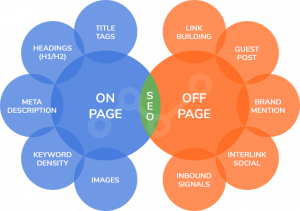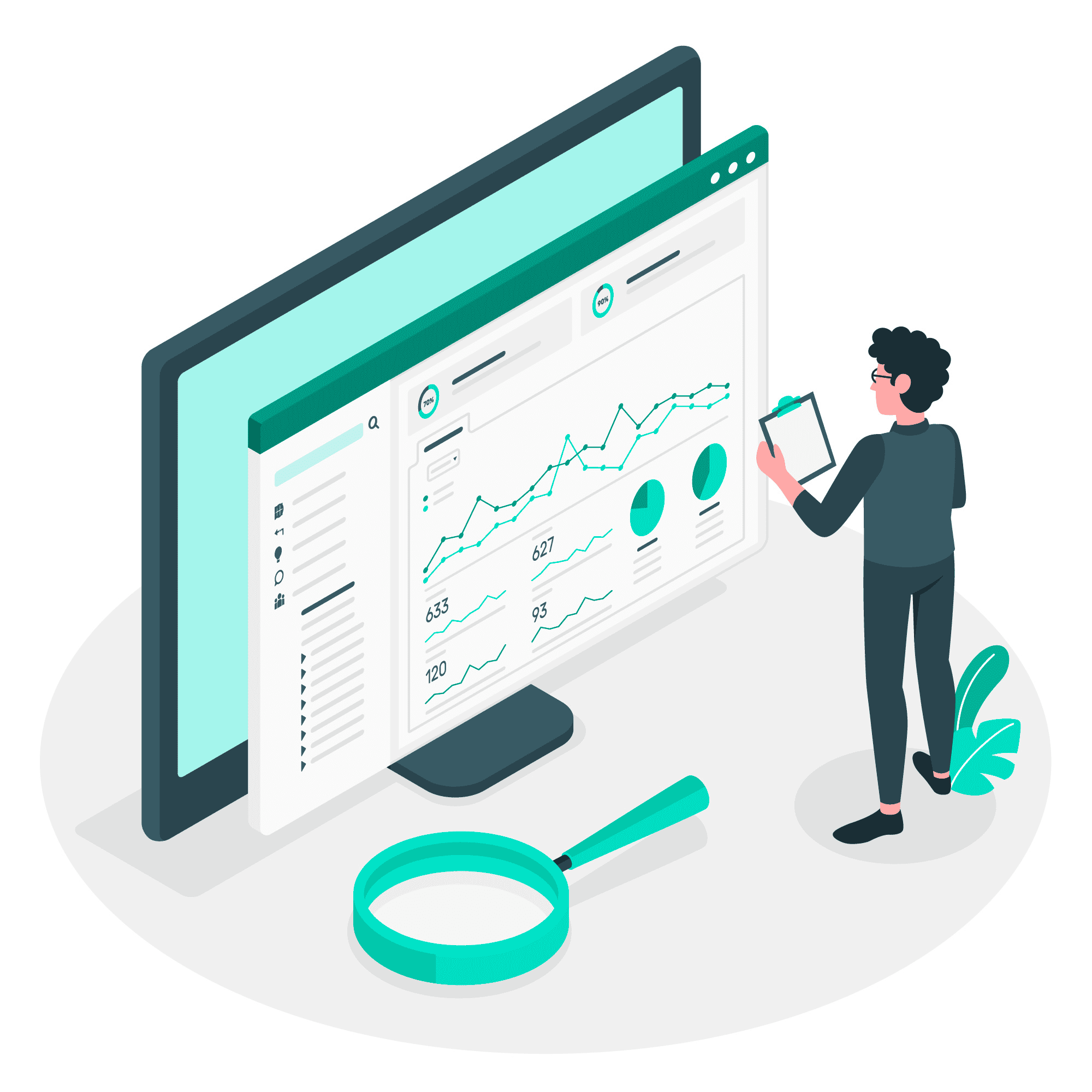How to increase your websites monthly quality traffic
You have invested significant resources in developing your website to add digital exposure to your business. It’s great to have a nice place of your own in the digital ocean, but without visitors (traffic), it is not helping your business.
The next big question that needs to be answered is “how to get traffic to your website”? You may have asked your friends and colleagues what to do next. Some people may tell you that PPC is the fastest way to get traffic to your website. Others could have suggested that SEO is the best way to drive more visitors to your domain. There are lots of articles advocating one way or another. We understand that some of it may be confusing when you are not a website traffic expert. Especially when you have limited time and would much rather focus on your core business and take care of client’s needs. Worry not, in this article we will cover both activities and offer strategies that combine SEO and PPC management so that you can reap the best benefits of both without compromise. By the end of this article you will be able to better understand:
- What is PPC and when to best apply it to drive more traffic to your website.
- What is SEO and how it helps you drive visitors to your digital domain.
- What are key benefits of using PPC and how to overcome shortfalls of paid search advertising.
- How SEO boosts SERPs rankings for your website, and associated Search Engine Optimization drawbacks.
- Hot to determine what is the best mix of SEO and PPC for traffic optimization for your website.
What is PPC and when to best apply it to drive more traffic to your website
PPC is an acronym and stands for Pay Per Click. This advertising model gained popularity via Google AdWords – as Google Search text ads were introduced in 2002. We have come a long way since AdWords got rebranded to Google Ads. Digital advertising has become more complicated and PPC meaning gradually expanded and became a general term referring to the search engine advertisement altogether.
If set up properly, PPC advertising campaigns offer great value by displaying your text ads when a relevant search query is entered into a search engine. PPC campaigns are a great way to get in front of potential clients, get extra exposure for your business, list your services and products, and get potential clients to visit your website or call your number, when they are searching for solutions.
Awesome side of PPC is that you can sprint from scratch to – having the best performing campaigns driving leads to your website and business within days! In order to get your Text Ad displayed in Google search results, the trick is to choose keywords carefully and make calculated guesses on what search queries might trigger them. Simply put, your PPC Advertisement will only be shown to the target audience, if someone enters a relevant query in Google search to trigger your keyword and display your ad.
Due to the fact that PPC advertising mechanics are relatively simple, and setup does not take too long, it’s usually the first choice for traffic hungry marketers. However, you need to keep in mind that PPC search ads work best only when there is an intent from the client to search for the product or solution you are offering. Moreover, it is one of the ways Google makes money: you get premium listing on Google Search Network and a chance of driving traffic to your website; Google gets the money you pay for PPC advertisement. Once you stop paying, the main benefits of PPC ads will go away. There also is another side to this argument – you can stop your PPC campaigns anytime you want and cut the losses without further commitment.
In general, we recommend you to use PPC campaigns in cases when: you have a special promotion; search volume for your intended keywords is high; competitor activity in your niche is low; or you are just starting up with your digital promotion and want to test keywords, search ads and traffic volumes to determine further actions.
What is SEO and how it helps you drive visitors to your digital domain
Like PPC, SEO is also an Acronym. It stands for Search Engine Optimization. In practice, SEO is an umbrella term uniting marketing activities that are geared towards optimizing the placement and the appearance of a website in search results organically (i.e. naturally, without purchasing ads).
In comparison, if PPC advertisement can be set-up in a short period of time with almost instant benefits, SEO takes time and effort, and the product of your work would show itself much later down the road. SEO cannot really be classified as an advertisement. Rather, it is a way of organizing things about your business on your pages, website and outside of it, with an intent of getting a better position in Search Engine Ranking Protocol (SERP). SERP in itself is a way to organize and display results for search queries in google search engine.
There are thwo main sides to SEO that help you improve your position in SERP. The first one – On-Page SEO is a practice of optimization performed on the website itself. On-page search engine optimization includes activities related to title tags, h1 tags, descriptions, keyword density, keyword placement, etc. The second main part is Off-Page SEO. It focuses on activities performed outside of the actual website but having a direct effect on the website’s ranking in SERP. Off-Page SEO includes, article writing, social media integration, link-building, blog and forum activities, and so on.

Having many aspects and activities that need optimization is the main drawback of SEO. Understanding, planning for optimization and executing the tasks at hand for each of these aspects is labor intensive and time consuming. Moreover, Future benefits of SEO are hard to predict and quantify. For example, you might understand what part of the website needs optimization and actually do a decent job on it, but how it would translate into increased traffic is not easy to estimate. It’s also true that you do not incur direct advertising costs with SEO. Still, Search Engine Optimization is not completely free as you pay for labor time and may need to spend funds on some OFF-Page SEO Optimization (i.e. – getting your website listed on a trustworthy website).
Overall, we recommend incorporating SEO, in your long term digital strategy and start working on it today. It might not give you results right away, but will definitely help your website grow organically and gain better traffic while amplifying performance of other digital campaigns.
One might think that SEO is too hard to bother with and it’s better to opt for simpler ways for traffic generation. As much as we respect that decision, we have to advise that you are already behind the curve if you are not doing SEO. In fact, the optimal starting point for both Off-Page and On-Page SEO was yesterday. One should not expect any stable organic traffic to the website without SEO. The sooner you realize the importance of Search Engine Optimization for website traffic amplification, the better future your business will have in a constantly digitizing world.
Hot to determine what is the best mix of SEO and PPC for traffic optimization for your website.
Once you understand the nuances of PPC advertising and SEO, the task is to determine what’s the best mix to maximize traffic to your website. It’s easier said than done, but do not worry – we are here to simplify that decision for you.
There are lots of factors to consider while trying to determine the best mix of PPC and SEO for Website traffic maximization. Let’s go through some of the main ones:
Factors to consider while working out best mix of PPC and SEO for website traffic optimization:
- Time: delivering results under time pressure is not an easy task. Sometimes you just do not have enough time. On average SEO would take 3-6 months of work to yield some noticeable results and 6 months to 1 year to have a significant impact on organic traffic directed to your website. Meanwhile, the entire setup for Google Ads PPC Text Advertisement on Search network with keyword research, campaign planning, budget and KPI forecasting, analytics integration and launch can be done within a week.
- Labor: There are times for every business, when you can shift focus to marketing, research, development and business optimization, from your core product or services. This might be a result of the seasonal nature of your industry, cyclical purchase patterns with idle middle periods, business development stage, or any other relevant cause. What matters is that you or your employees now have some labor time to dedicate to perfecting your digital presence and working towards generating better traffic to your website. Or on the contrary, you might have to focus on your core business 24/7 without idle time to think about website traffic optimization.
- Digital Development Stage: Your digital marketing strategy depends on your business’s development stage. So does the traffic optimization mix between SEO and PPC. Without complicating things any further, just look at your website’s average monthly traffic data from the previous 3-6 months. Compare your average monthly traffic data to the table below to understand roughly on which phase you are:
Phase Average Monthly Traffic Suggested Mix between PPC/SEO Rocky Start 0-100 70/30% Development 100-1000 50/50% Stable Growth 1000-5000 30/70% It should be noted that numbers may vary depending on your industry and geo location, but this should give you an idea about where your business falls in the Digital Development stage by average monthly traffic. As indicated in the table, different stages of your website’s digital development would require a different split of labor time and budget between PPC and SEO campaigns for Traffic maximization.
- Budget: Money is always a factor. It just can speed up the process of website traffic optimization. On one hand you can spend more on PPC – buy more clicks to direct more traffic to your website. Alternatively, you might hire content writers, on-page seo specialists, pay for website listings and speed up SEO development process, simultaneously speeding up target website traffic growth KPIs. Lack of funds will also play a major role in your website traffic optimization mix! In such a case, you would need to bite the bullet and have realistic expectations of going much slower, with low-risk, low-reward steps. It will be a simple trade off between money and time.
- Operating Policies and Regulations: not only the state and federal laws dictate what and how you could advertise via digital means to gain traffic to your website, but also the platforms and the website you would need to use for your PPC and SEO campaigns. For example, your character limit (including empty spaces) for PPC text ads title is 30, and your entire ad copy for body text should not exceed 90 characters per line. You will only get 2 lines of your ad copy displayed at a time. (Read here detailed guide on PPC text ad technical recommendations for better performing ads). Not complying with this or other policy requirements of the platforms would make your PPC ads ineligible. While not following the guidelines set for SEO will not only fail to work, but could have a drastically negative impact on your website to the extent of domain being blacklisted, or not being eligible to be used in SERPS and removed from the search results indefinitely.
Factoring all the data in, to determine the best mix of SEO and PPC for website traffic maximization we recommend you to take a pause, think about your business and your operating environment. Certain factors will become clear right away, while others might take some time to clarify. Think about the goal, or set KPI for your website Traffic, for the next month, next quarter or next year, and use the advice we provided to determine what would be the best mix of SEO and PPC for your business.
In general, we would recommend to start with low budgets on PPC, and see what keywords are performing well. Check which queries are searched for the most times. Use search queries and Keywords data to plan your SEO campaigns and optimize website traffic. Combine SEO and PPC activities, so that the unique benefits each of them offers balances the shortcomings of the other one. Following these guidelines you should get a powerful, robust combination of Search Ads and Search Engine Optimization enabling you to drive more quality traffic to your website and boosting your business digital performance.



